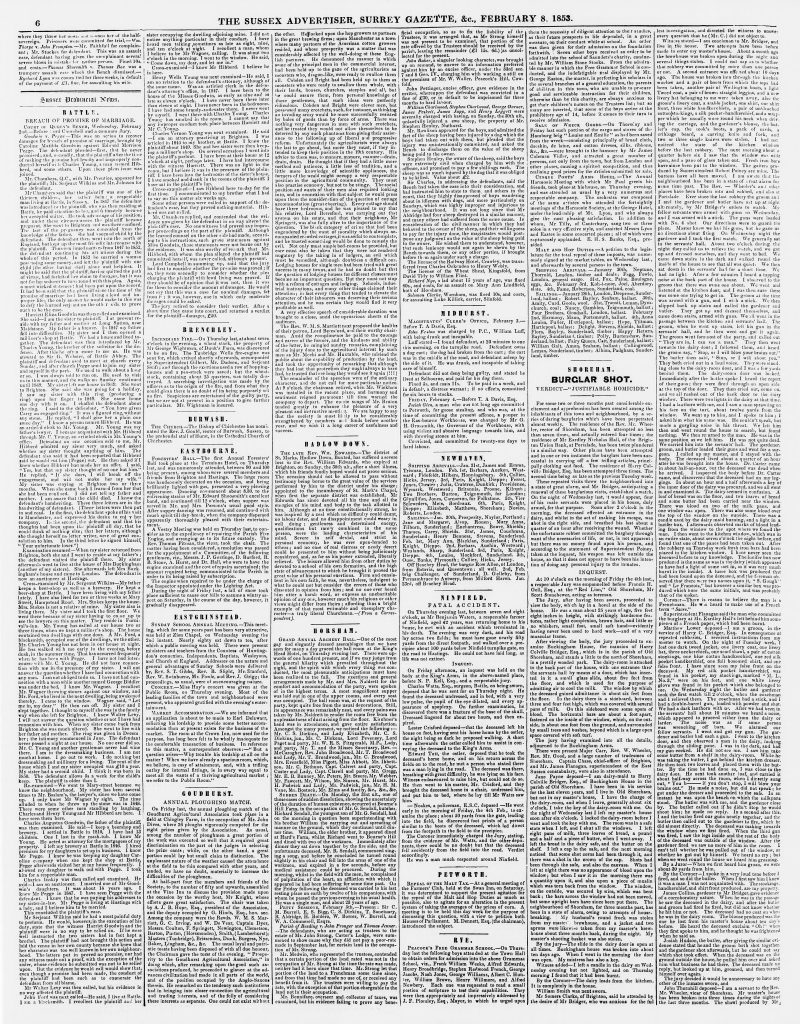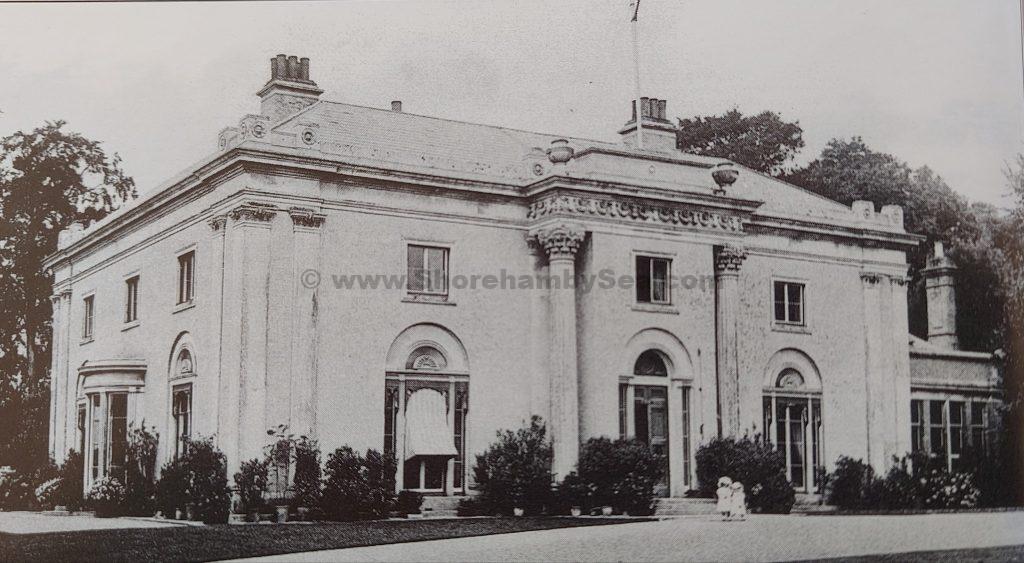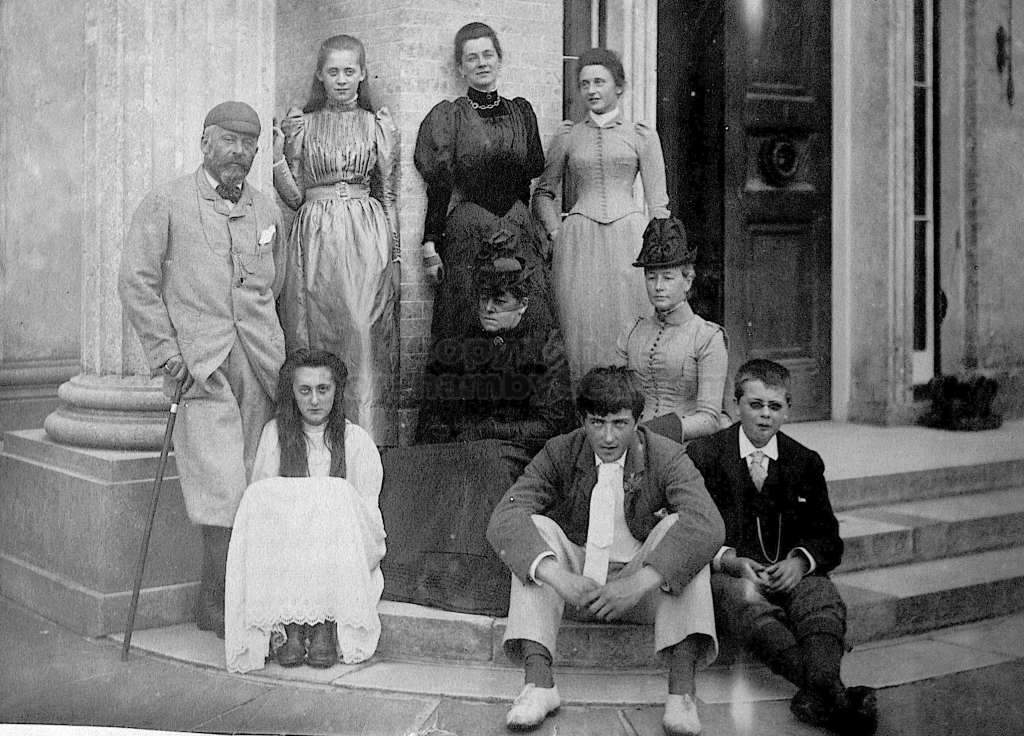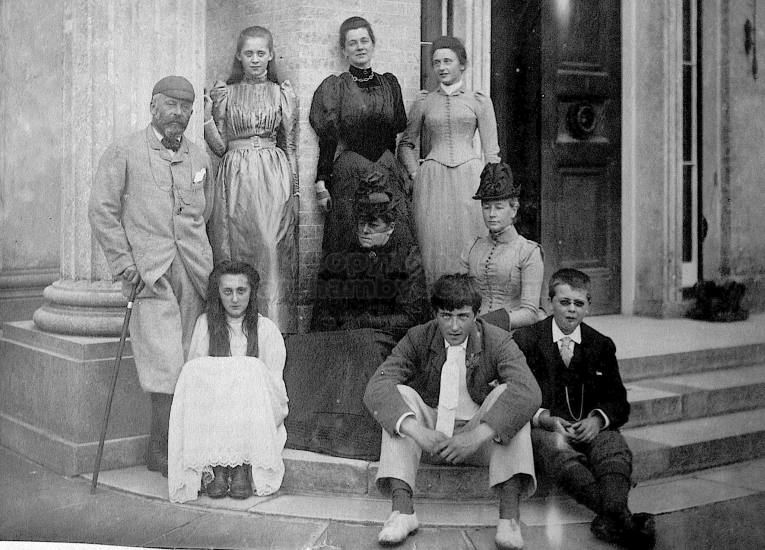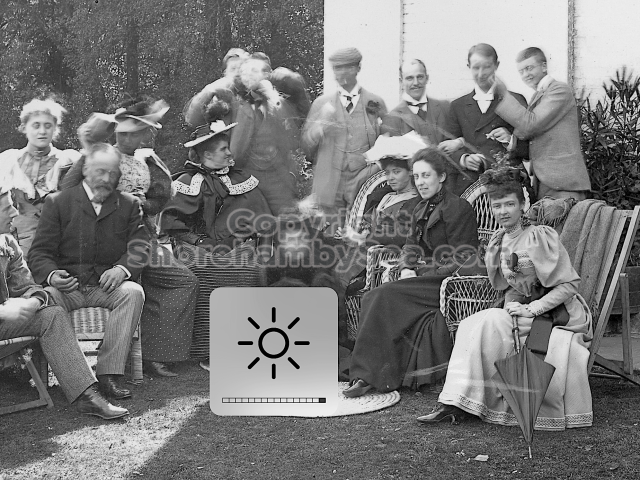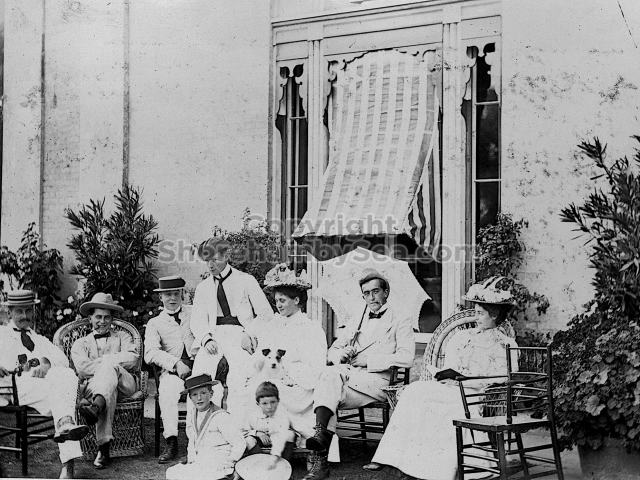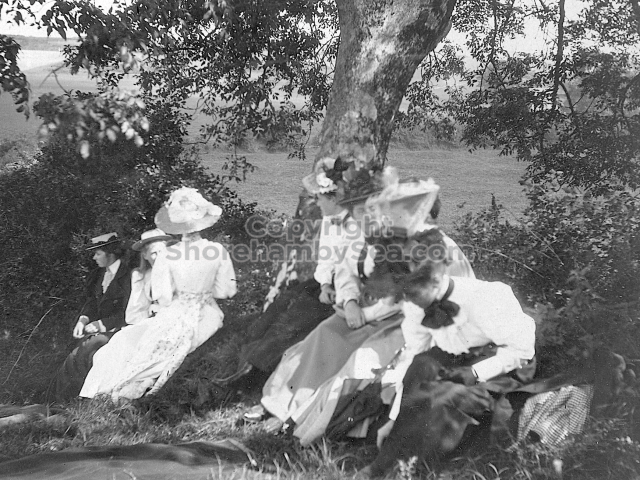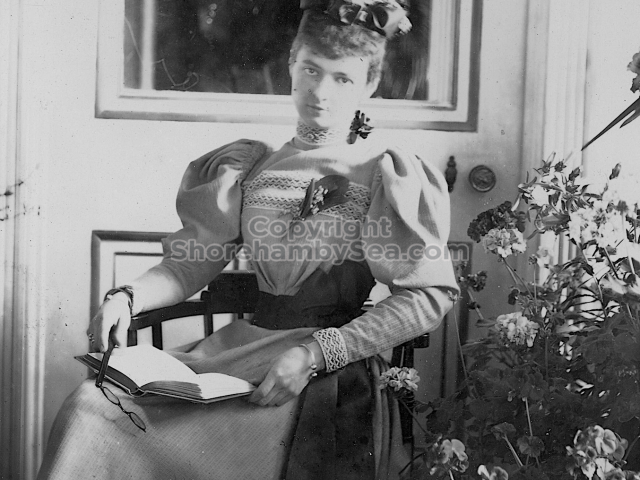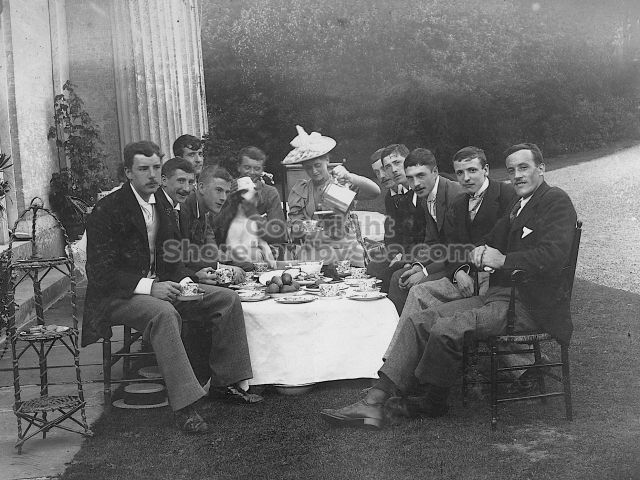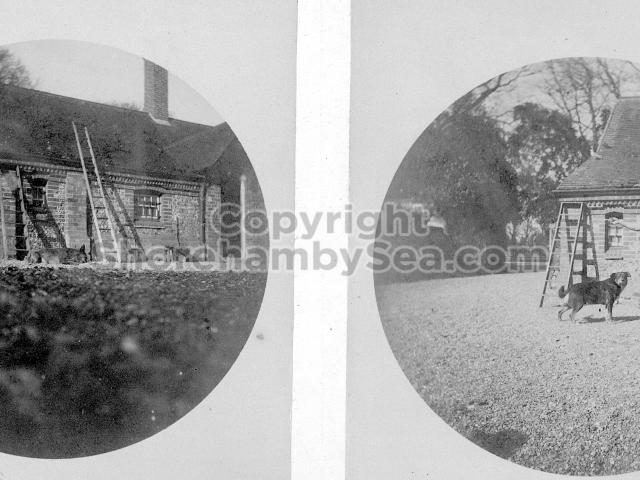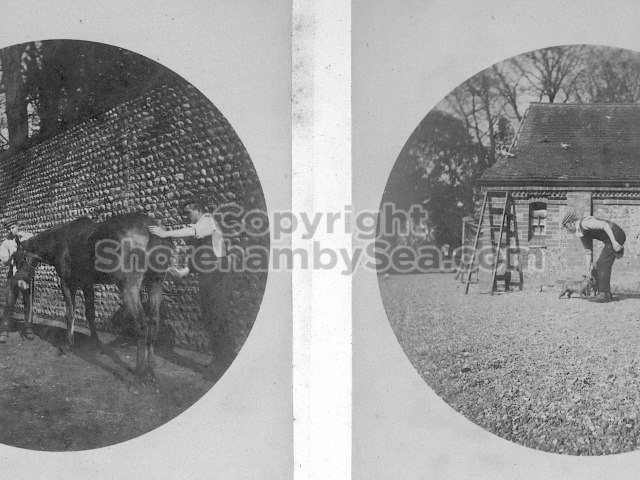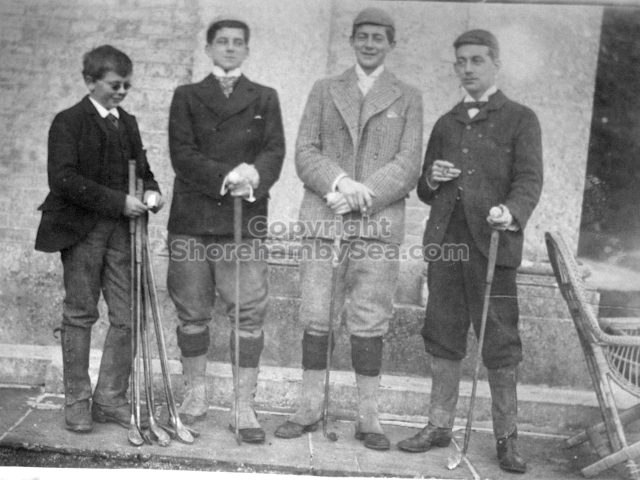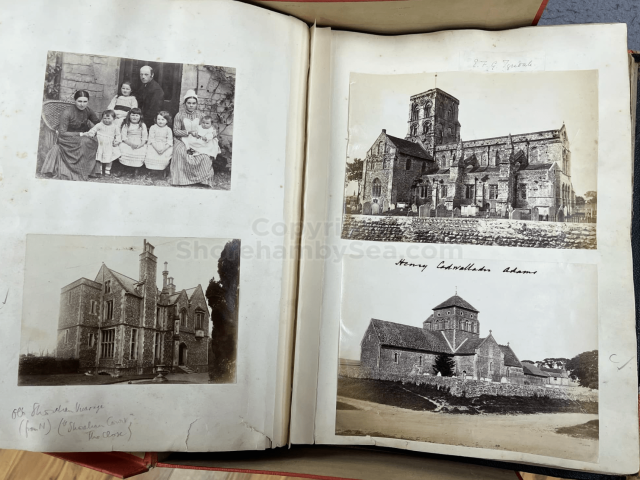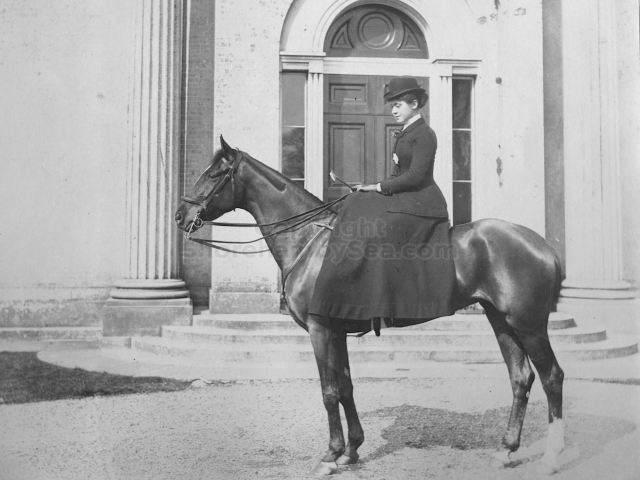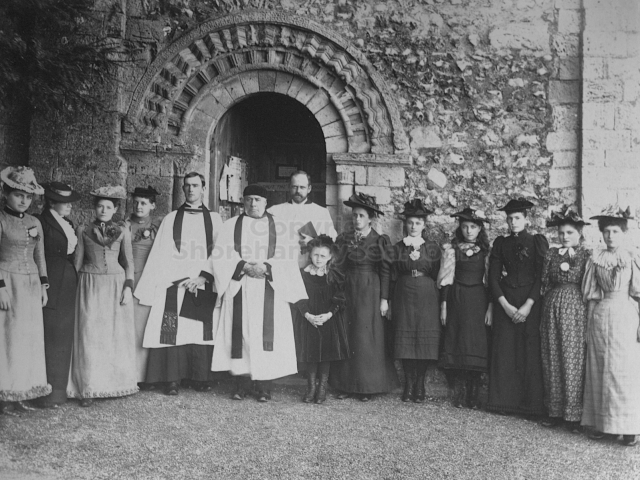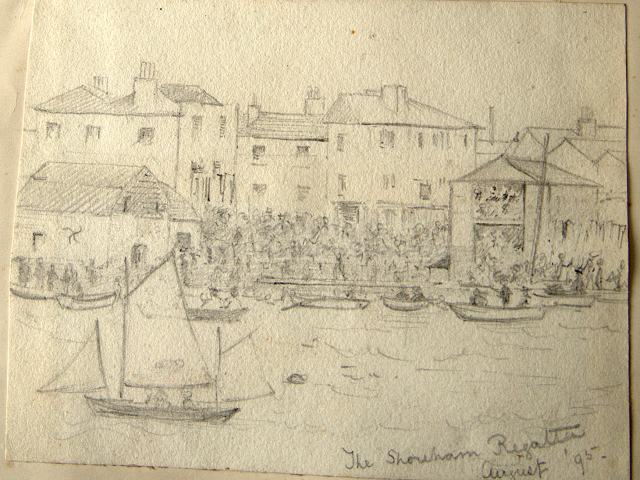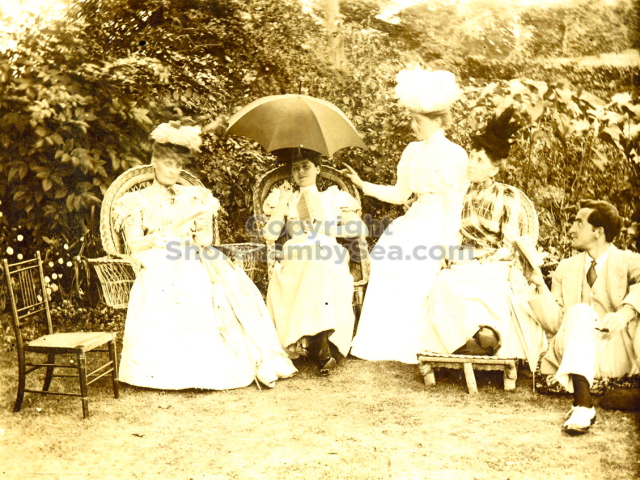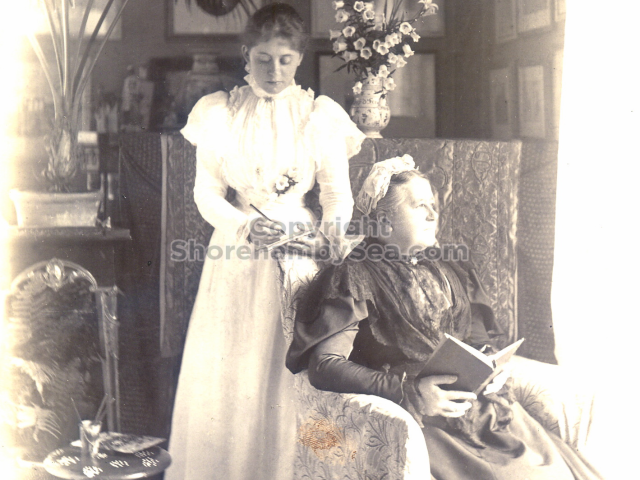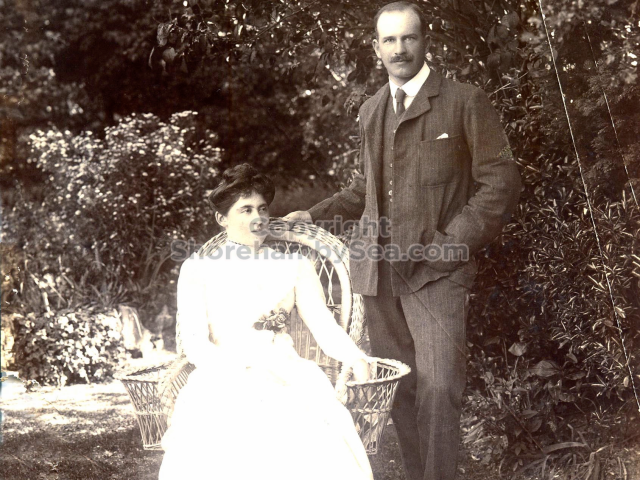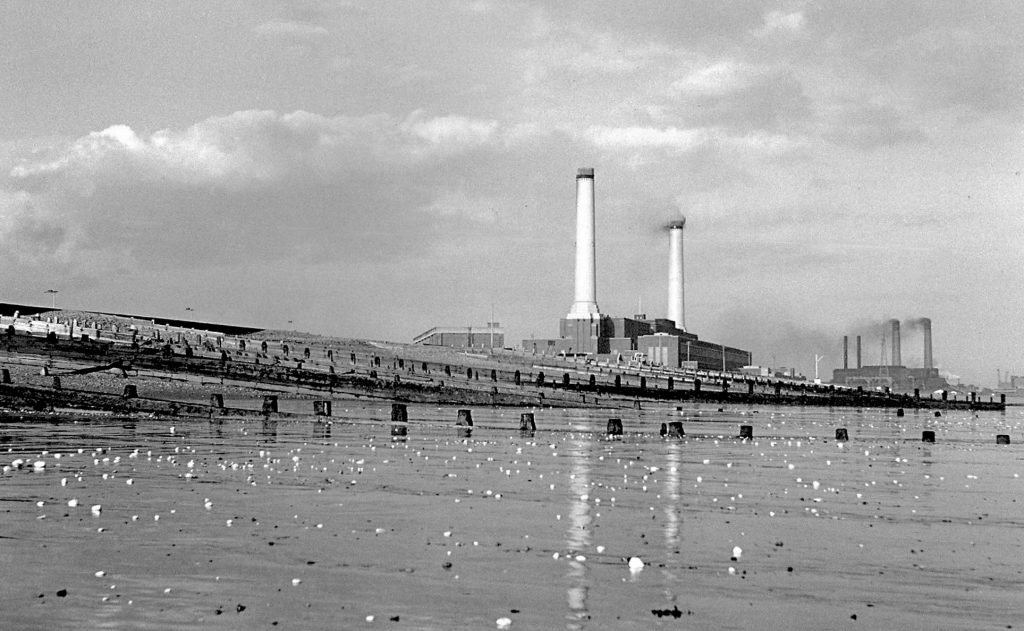Covering letter:
This Family Scrapbook compiled by the Head Family to record their time at Buckingham (Buckingham House, Old Shoreham) from 1889 to 1905 was in the possession of Lady (Hester) Marsden-Smedley (née Pinney), the daughter of Lady Hester Pinney (née Head). Before she died, Lady Pinney stated that she wanted me to have it because of its relevance to Shoreham. In due course I made contact with her daughter in Chelsea and arranged to go up to collect it.
Perhaps not surprisingly, Lady Marsden-Smedley would have liked to have kept it, since it contained so much of Family interest. In the event, she simply tore the book in half and gave me the front part, and this I placed in Marlipins. It may since have been dismembered, which is a great pity.
The other half I was very surprised to be offered many years later through a friend. and bought it, at a price, and did not enquire as to its provenance. I still have it, in its somewhat battered slate.
It is (was) three-quarter leather bound, about 100 mm thick in all, the boards approx, 370 x 298mm, with interleaved pages designed as a commercial scrap-book.
It is clear that the Head boys were responsible for most of the snaps, but there are other more professional photos taken probably by William Page, Photographer, of Shoreham, whom Hester (Pinney) said she encouraged. There are also watercolours by Hester of a competent, but amateur quality, together with sundry printed items of interest, and photos of local views and personalities.
The whole gave a unique and fascinating view of the very happy life at Buckingham until Henry Head’s death in 1905, when the family quit Old Shoreham. The house lay empty and in 1911 was gutted, with the grounds occupied by a new house erected to the North.
During their stay at Buckingham, the Heads effectively filled the role of ‘Lords of the Manor’ in the Town, and were most popular. Henry Head was an outgoing and generous personality, and he was clearly led by his very positive daughter Hester (Pinney), abetted by her brothers. The Park was regularly opened to the townsfolk, and Henry seems to have been the leader in the 1897 Diamond Jubilee celebrations. When, apart from a Grand March through the Town to a Fair and general festivities in the Park, there seems to have been a very early filrnshow in the field by the old Swiss Gardens. Fifty years later, Hester Pinney was stilt fondly rernembered in the Town.
The Book records Hunting, Cricket, Yachting (Steam and Sail) Golf, Shooting, Riding, and alfresco entertainments.. The girls from the London Store, D. H. Evans, which the Heads owned, were also entertained in the Summer and are seen obviously enjoying themselves. The Book is a wonderful, unique, record of a lost age, which was soon to come to a tragic stop. One son was lost on the Titanic (sic Christopher Head), and one at Gallipoli (sic. Bernard Head); it is fitting that their memorials are in Old Shoreham Church, in the place that they so enjoyed.
Author unknown, date post-1983
